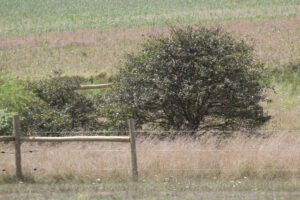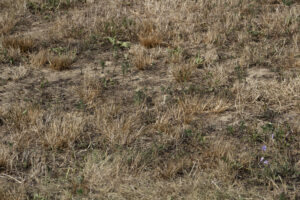Copyright © 2024 National Association of State Conservation Agencies | All Rights Reserved
PO Box 613 • Stevens Point, WI 54481
715-340-0681

The West Virginia Conservation Agency and the state’s 14 conservation districts took a lead role in helping farmers deal with a lingering statewide drought that extended through much of the summer and into the fall.
All Agency best management practices intended to combat drought were made available to the 14 conservation districts in July.
The cost-share practices available included water components for livestock, help with irrigating crops, connecting/tapping into a city water line, planting cover crops and more.
West Virginia Gov. Jim Justice declared a State of Emergency due to drought conditions on July 26, and then on August 23 extended the declaration an additional 30 days.
Earlier in the summer, the drought was most severe in the Eastern Panhandle counties, an area of the state that’s in relatively close proximity to the Washington, D.C. metropolitan area. Later, in September, the most severe conditions were near the state’s western border with Ohio and Kentucky, and in the Ohio River Valley area, and spreading to the north, south and east.
As of Sept. 24, the U.S. Drought Monitor listed the entire state in “D1” drought or worse. The majority of the state was in “D3” status, which is “extreme drought,” or worse.
“Exceptional drought” in many counties – or “D4” status — was declared for the first time ever for West Virginia in the 25-year history of the U.S. Drought Monitor.
The drought assistance offered by the West Virginia Conservation Agency was made possible by the statewide Agricultural Enhancement Program’s Exigency Program, which began in the summer of 2022 to provide cost-share assistance for West Virginia farmers impacted by future emergency situations.
Each conservation district was allowed to set their own per-cooperator cost-share limits.
Agency conservation specialists stayed very busy in late July, August and September fielding requests for drought assistance cost-share funding.
(At our NASCA annual meeting in Duluth, Minn., on Oct. 8, WVCA Conservation Specialist Kaitlyn Jones will have a presentation on the Agency’s Exigency Program and drought response.)
The water for livestock components eligible for cost-share were: Portable water tanks, associated valves and fittings, water pumps, portable pipeline and portable water troughs.
Components eligible for cost-share for irrigating crops were: Portable water tanks, water pumps, portable pipeline, associated valves and pipe fittings, drip irrigation line, irrigation timers, and mulch.
Across the state, Agency leaders and staff joined with district supervisors and also our partners with the state Department of Agriculture, West Virginia University Extension and the USDA-Farm Service Agency to share information with the public about available drought assistance that each agency had to offer.
This was done primarily during evening meetings and through website and social media outreach.
– Written by Davin White, Communications Specialist
West Virginia Conservation Agency


West Virginia farmers dealt with severe drought conditions for much of the summer and into the fall. With cost-share funding available through the West Virginia Conservation Agency’s Exigency Program, cooperators could purchase water components for livestock and receive assistance with irrigating crops, connecting/tapping into a city water line, and planting cover crops.


West Virginia farmers dealt with severe drought conditions for much of the summer and into the fall. With cost-share funding available through the West Virginia Conservation Agency’s Exigency Program, cooperators could purchase water components for livestock and receive assistance with irrigating crops, connecting/tapping into a city water line, and planting cover crops.
Copyright © 2024 National Association of State Conservation Agencies | All Rights Reserved
PO Box 613 • Stevens Point, WI 54481
715-340-0681